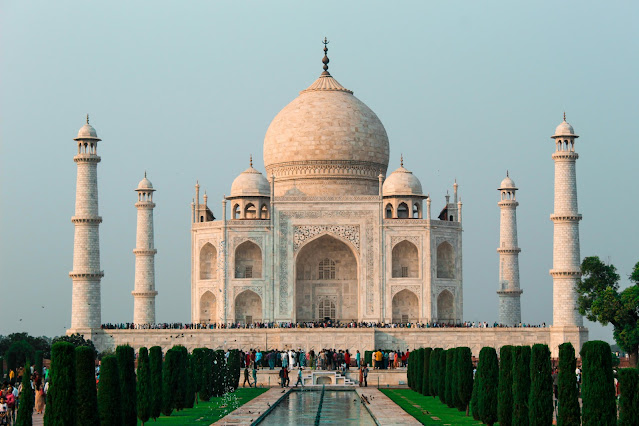1. Great wall of China
The Great Wall of China is an ancient series of walls and fortifications, totaling more than 13,000 miles (about 20921.47 km) in length, located in northern China. When Emperor Qin Shi Huang ordered construction of the Great Wall around 221 B.C., the labor force that built the wall was made up largely of soldiers and convicts. It is said that as many as 400,000 people died during the wall's construction; many of these workers were buried within the wall itself. Petra is an ancient city that lies in present-day Jordan and dates back to the fourth century B.C. Ruins of the once-great metropolis and trading center now serve as an important archeologic site and tourist attraction. Petra has also been referred to as the “Rose City” because of the color of the stones used in its buildings. It was named a UNESCO World Heritage Site in 1985. 3.Christ the Redeemer (Brazil)
Christ the Redeemer (Cristo Redentor) is
a 30-meter-high statue, mounted upon an 8-meter pedestal, and of course the 700-meter-high mountain of Corcovado. It was constructed between 1922 and 1931 from soapstone and reinforced concrete. Today it is a Brazilian cultural icon and global symbol of Christianity. On the 75th anniversary of the statue’s construction, in October 2006, the Archbishop of Rio consecrated a chapel beneath the statue. The statue was hit by lightning in 2008 and in 2014, causing damage, while it has also been the focus of recent renovation efforts.
Tucked away in the rocky countryside northwest of Cuzco, Peru, Machu Picchu is believed to have been a royal estate or sacred religious site for Inca leaders, whose civilization was virtually wiped out by Spanish invaders in the 16th century. For hundreds of years, until the American archaeologist Hiram Bingham stumbled upon it in 1911, the abandoned citadel’s existence was a secret known only to peasants living in the region.
The site stretches over an impressive 5-mile distance, featuring more than 3,000 stone steps that link its many different levels.
Chichen Itza is located about 120 miles from the modern-day resort town of Cancun, on Mexico’s Yucatan Peninsula. The name Chichen Itza is a Mayan language term for “at the mouth of the well of the Itza.” The Itza were an ethnic group of Mayans who had risen to power in the northern part of the Yucatan peninsula, where the city is located.
6. Roman Colosseum (Italy)
The colosseum is an elliptical Amphitheatre in the Centre of the city of Rome, Italy, just east of the Roman Forum. It is the largest ancient Amphitheatre ever built and is still the largest standing Amphitheatre in the world, despite its age. Construction began under the emperor Vespasian (r. 69–79 AD) in 72[1] and was completed in AD 80 under his successor and heir, Titus (r. 79–81).[2] Further modifications were made during the reign of Domitian (r. 81–96). The Taj Mahal is an enormous mausoleum complex commissioned in 1632 by the Mughal emperor Shah Jahan to house the remains of his beloved wife. Constructed over a 20-year period on the southern bank of the Yamuna River in Agra, India, the famed complex is one of the most outstanding examples of Mughal architecture, which combined Indian, Persian and Islamic influences. At its center is the Taj Mahal itself, built of shimmering white marble that seems to change color depending on the daylight. Designated a UNESCO World Heritage site in 1983, it remains one of the world’s most celebrated structures and a stunning symbol of India’s rich history.










awesome information
ReplyDelete